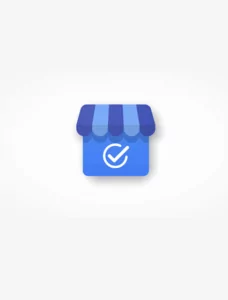
- Red Search
- Resources
- Google Maps SEO
Google Maps SEO: Rank Higher in Local Seach Results
-
 Daniel Law
Daniel Law
If you’re aching to try a different coffee shop within the metro, you’d first pick up your phone, tap into Google, and search for “coffee shops near me.” The same applies to pastry shops, gift shops, local services, and virtually every other business in your location.
Since 81% of Australians prefer shopping online and browsing for store locations on Google, it only makes sense to put your business on top of search engine results pages (SERPs).
That’s because top-ranking businesses in Google get as much as 24.4% traffic from searches, potentially leading to sales and conversion or a physical visit from the consumer.
But how can you make the most of Google Maps? The answer… Google Maps SEO.
In this post, we’ll go through what makes Google Maps SEO or local SEO essential to expand your business reach and put your business front and centre in Google Map Pack.
What is Google Map Pack?
You’ve heard about Google Featured Snippets, aka Position Zero, which displays information most likely to satisfy the various user search intents. These featured snippets are replaced with a Google Map Pack or Local Pack for location and navigational searches.
Google Map Pack is like a featured snippet that displays the top three Google Maps-based results in a search query with local or navigational intent.
When customers search for businesses and local stores online, Google displays different Google Maps results and pages relevant to the search query. You may see Google My Business (GMB) or third-party business listings such as a Yelp business page, Tripadvisor profile, or a Facebook Business Page.
Why is Google Maps SEO Important?
Local SEO statistics indicate that 86% of Australian consumers rely on Google Maps to navigate across local stores and for everyday travel. Most Google users also don’t scroll past the first page results when choosing a restaurant, cafe, or other place.
That makes ranking on Google Maps crucial since it lets you leverage local intent, significantly increasing business visibility across desktop and mobile devices. Google Maps SEO is also vital for local SEO strategies prioritising in-store visits and brick-and-mortar purchases over online checkout and payment methods.
The following statistics reinforce the importance of investing in Google Maps for your business:
- Roughly 80% of Google searches done on mobile lead to conversion
- 30% of customers browse local shops weekly
- More than 50% of Near Me searches lead to a physical store visit.
Having a reliable SEO strategy should already help boost your traffic and leads. However, ranking on Google Map Packs with local SEO should open many on-site and off-site opportunities for your business.
With countless businesses competing for local packs, staying ahead can be daunting and costly without a proper strategy. Here are some tips on how to compete and rank in Google Maps.
10 Practices To Rank Higher in Google Maps
Here are 10 best practices for competing and improving your ranks in Google Maps listings. Read on and discover which tips are already in motion and which ones you need to implement.
1. Create and Update Your GMB Account
First, you can’t rank on Google Maps Pack or become visible on Maps if you don’t have a Google Maps Listing or Google My Business account set up.
If you have already set up a GMB account, skip this first portion and read about updating your GMB listing. Otherwise, follow these steps to add your location and business name to Google Maps:
- Visit google.com/maps or download the Google Maps app on your mobile device.
- Find your business name on Google Maps. If it appears in the results along with its correct location, then you already have a business listing.
- If you can’t find your business name in Google Maps, Google will suggest to add a missing place in the drop-down menu. Click that to add your business listing.
- In the next dialogue box, Google Maps will prompt you to provide important business information such as name, location, and business category (Grocery, Restaurant, Hotel, etc).
Make sure all information you add about your business is updated and accurate. The same applies to brands with an existing Google Maps listing.
If you recently changed your opening hours or have moved to a new location, you might want to update your Google My Business profile to ensure your customers can find you.
Leaving your GMB listing out of date or inaccurate can affect your visibility and reach because people might leave a bad review if they find out you’re not where your Maps pin is.
Another detail to consider is your contact information. Many businesses set and forget their contact info when creating a GMB listing, but inconsistency across your business profiles can negatively impact user experience and the buying journey.
If you recently changed your contact number, address, or email, update all your online business listings, especially your GMB profile, so customers can reach you.
2. Claim and Verify Your Business Location on Google Maps
Setting up a GMB profile to show up on Google Maps is one thing; verifying your business location is another. Google lets you skip the location verification when setting up your business listing for the first time.
Depending on your business and location, you can verify for the first time through:
- Phone/Text
- Video Recording
- Postcard
Google will also instantly verify a business location if you set it up using Google Search Console or have 10 or more location profiles for the same business.
3. Embed Your Map Location on Your HTML
Another way to ensure Google and your customers find you is to embed your Google Maps location on your contact page. This is a standard practice among many business websites and improves UX and trust value since you tell people and Google about your physical location.
Furthermore, embedding your map location tells Google that people can find your business at the same address indicated on your listing.
To get your Google Map location on your business website:
- Search for your brand name in Maps
- Click on your business listing and click Share
- In the following dialogue box, click Embed a Map
- Copy and paste the HTML link on the HTML of your business’s contact page.
4. Add an SEO-Friendly Business Description
Google pointed out how relevance and trustworthiness are vital in ranking pages on search queries. We recommend optimising a business description for your target keywords and local search.
To add a business description the first time, log into your GMB profile, then click on Add Description. Make sure to add your target keywords (location and niche-relevant keywords) in a way that reads naturally so you don’t harm your UX.
Capturing your target keywords while accurately describing your business will significantly boost your local search visibility, especially with a bespoke local SEO strategy.
5. Post Business and Product Content Regularly
You can post your products, business updates, or engaging content on your Google My Business profile. Doing so lets Google and your users know that you’re active and indirectly impacts your visibility on local searches.
When posting content on your business profile, make sure to:
- Post high-quality content relevant to your business and products/services without any misspellings, gibberish, or distracting content.
- Keep your content respectful and avoid profane, vulgar, and obscene materials that violate Google’s content policy.
- Only use authoritative links. Google won’t allow links that point to phishing, malware, or malicious websites and will take action against your post or profile.
6. Add High-Quality Photos to Your Business Listing and GMB Profile
Store and product photos are crucial in driving traffic and potential leads to your website and physical store. They help build an impression of your branding and products, and you’re leaving tons of money by ignoring photo quality in your Google Maps SEO.
Additionally, you can add videos and review photos to your GMB or Google Maps listing as long as they best highlight your business and physical location.
7. Include Website Links to Your GMB Profile
Users of your store on Google Maps may want to know more about your site than what’s displayed on maps. Some may want to see your products online and visit your product pages.
We highly recommend including your website link to your Google My Business profile to leverage organic traffic and convert leads to sales.
8. Tap into Social Media Channels
Social media engagements indirectly impact your search ranking as Google uses website engagements to rank websites on SERPs, particularly for queries with local intent.
That’s because Google will see a strong signal on your site if you have many engagements on social media channels like Twitter, Facebook, Instagram, etc. The stronger and more stable these signals become, the more visibility you’ll enjoy from Google Maps and Local Packs.
9. Earn Credibility by Gaining More Reviews
Your business’s trust value can make or break your local SEO strategy. One way to grow trust between your brand and your consumers is by earning tons of reviews.
Statistics show that 89% of online consumers are likely to purchase from a business that responds to all user reviews on Google. Moreover, about 87% of customers claim to read about local business reviews before purchasing from that business.
You can get user reviews by politely asking your recent buyers through email or other channels. Google encourages businesses to leave a product review as long as you’re not incentivising them to review your product.
10. Earn High-Quality Local Backlinks
Link building is useful for local SEO, as is every other SEO strategy. Besides, Google Maps SEO isn’t complete without building local backlinks reinforcing a user’s buying journey.
Backlinks also come in different types, and each can help your overall SEO strategy in one way or another. We recommend contacting local business directories relevant to your industry and signing your business up for their listings.
You can also consider local news outlets and invite them to feature your product, anniversary promotions, and other exciting feats worth publishing.
The tips discussed above should help you improve your local search visibility and serve as stepping stones to a comprehensive Google Maps SEO strategy.
Partnering with an award-winning Sydney SEO agency takes things a step further and sustains valuable growth for your website by ranking ahead of your competitors in Google SERPs.
Written by





